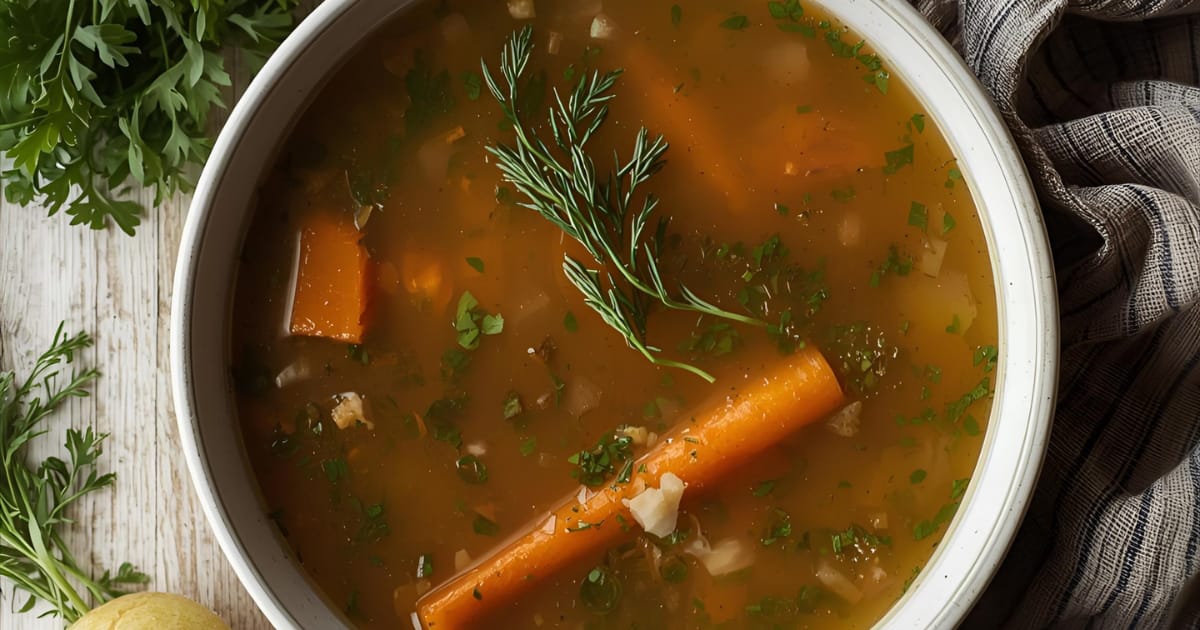- RoamWell
- Posts
- Why Bone Broth Deserves a Spot in Your Wellness Routine
Why Bone Broth Deserves a Spot in Your Wellness Routine
A slow, simple recipe that supports digestion, joints, and radiant health.

How to Make Beef Bone Broth (and Why Everyone’s Talking About It)
There’s something magical about a pot that’s been simmering all day.
The gentle bubble. The aroma that fills your kitchen. The knowing that what you’re making will heal, nourish, and comfort.
Bone broth isn’t new. It’s ancient—rooted in cultures all over the world. From traditional Chinese medicine to Italian grandmothers’ kitchens, broth has always been a sign of resourcefulness and care. What’s trending now is really just a return to what’s always worked.
🦴 Why Bone Broth Is So Good for You
Bone broth is packed with amino acids, collagen, and minerals that support your body from the inside out. Here’s what makes it a staple in my own kitchen:
✨ Gut health: The gelatin in broth soothes and strengthens your gut lining, helping with digestion and bloating.
✨ Skin, hair + nails: Collagen is your skin’s best friend. Broth gives you that glow from within.
✨ Joints + mobility: It’s rich in glucosamine and chondroitin—nutrients that help reduce inflammation and support joint health.
✨ Immunity: The minerals in broth (calcium, magnesium, phosphorus) are easy to absorb and help strengthen your immune system.
✨ Energy + recovery: Whether after travel, sickness, or just a long day—sipping broth helps your body repair and replenish.
It’s like nature’s multivitamin—warm, simple, and deeply satisfying.
🔥 My Tried-and-True Method
After years of trial and error, here’s the way I make rich, flavourful broth every time.
Step 1: Roast the bones
Lay your beef bones (marrow, knuckle, or a mix) on a baking sheet and roast at 425°F for about 30–40 minutes, turning once. This step deepens the flavor and color—don’t skip it!
Step 2: Simmer low and slow
Add the roasted bones to a large stock pot and cover with filtered water. Bring to a boil, then skim off any scum that rises to the surface (this keeps your broth clean and clear).
Once that’s done, toss in your veggie scraps—onion ends, celery tops, carrot peels, herbs, garlic cloves—whatever you have. I keep a freezer bag for these so nothing goes to waste.
Step 3: Add acidity
A splash of apple cider vinegar helps pull the minerals and collagen from the bones. It’s a small step that makes a big difference.
Step 4: Let it go
Turn the heat down to low and let it simmer for 12–24 hours. I usually leave mine for about 18. The longer it cooks, the richer it gets. Don’t rush it—this is a ritual, not a race.
Step 5: Strain + store
Once cooled, remove the bones and scraps. Strain the liquid through a fine mesh sieve (and if you want it extra clear, line it with organic cotton cheesecloth). Pour into glass mason jars and store in the fridge for 5–6 days or freeze for later.
👉 Pro tip: If you’re freezing, leave at least 1.5 inches of space at the top and don’t tighten the lids until frozen solid. (Trust me—I’ve broken too many jars learning that the hard way.)
🧂 Nutrition Snapshot (per 1 cup)
Nutrient | Approx. Amount | Benefits |
|---|---|---|
Calories | 35–60 | Light yet satisfying nourishment |
Protein | 7–10g | Builds + repairs tissue |
Collagen | 6–8g | Skin, joints, gut support |
Minerals | Rich in calcium, magnesium, phosphorus | Bone + immune health |
Gelatin | Naturally occurring | Aids digestion and gut repair |
💡 Values vary depending on bones and simmer time.
🌿 How to Use It
You can sip it straight from a mug with a sprinkle of sea salt, or use it as a base for soups, risottos, grains, and sauces. I love pouring it into my kids’ pasta sauce or using it as a post-travel reset.
On colder days, I warm a cup mid-morning instead of a second coffee—it’s grounding and deeply nourishing.
🌎 Why It’s Trending Again
Bone broth’s popularity isn’t just hype—it’s the shift back to slow wellness.
After years of quick fixes, people are craving rituals that feel connected and real.
Wellness brands may sell it in fancy cartons now, but the truth is, your body knows the difference between instant and intentional. Making your own broth reconnects you to that rhythm—slow, steady, and healing.
💫 A Final Thought
Bone broth isn’t just food—it’s medicine, tradition, and mindfulness in a pot.
It’s the reminder that sometimes the simplest things—warmth, patience, nourishment—are the ones that do the deepest healing.
So grab your stockpot, save your scraps, and let something beautiful simmer.
Your body (and your soul) will thank you.
If you found this guide helpful, share it with someone who loves a cozy kitchen ritual. And for more holistic living tips, follow @the.holisticmedicine.woman. 🌿